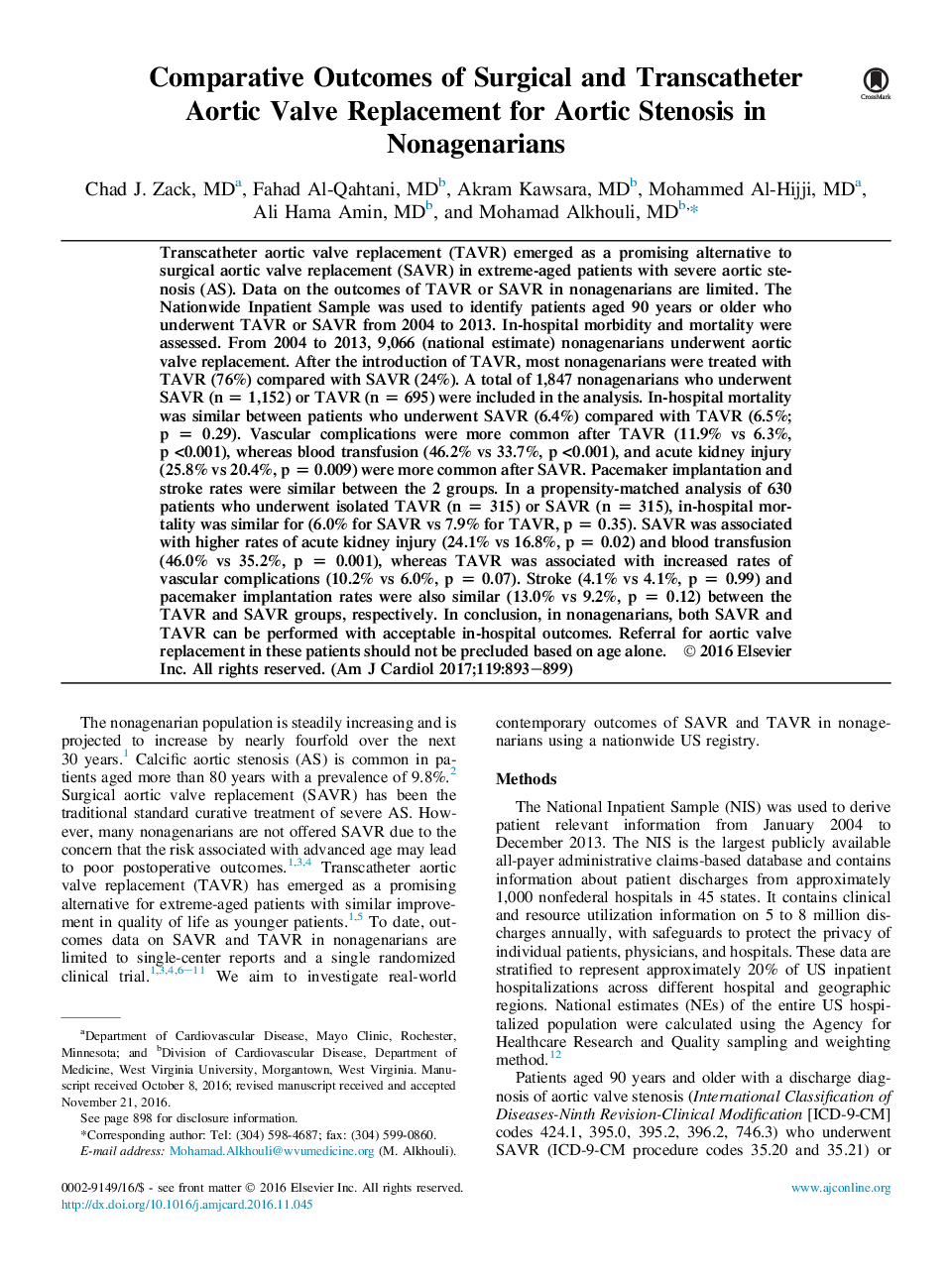| کد مقاله | کد نشریه | سال انتشار | مقاله انگلیسی | نسخه تمام متن |
|---|---|---|---|---|
| 5595309 | 1572092 | 2017 | 7 صفحه PDF | دانلود رایگان |
Transcatheter aortic valve replacement (TAVR) emerged as a promising alternative to surgical aortic valve replacement (SAVR) in extreme-aged patients with severe aortic stenosis (AS). Data on the outcomes of TAVR or SAVR in nonagenarians are limited. The Nationwide Inpatient Sample was used to identify patients aged 90 years or older who underwent TAVR or SAVR from 2004 to 2013. In-hospital morbidity and mortality were assessed. From 2004 to 2013, 9,066 (national estimate) nonagenarians underwent aortic valve replacement. After the introduction of TAVR, most nonagenarians were treated with TAVR (76%) compared with SAVR (24%). A total of 1,847 nonagenarians who underwent SAVR (n = 1,152) or TAVR (n = 695) were included in the analysis. In-hospital mortality was similar between patients who underwent SAVR (6.4%) compared with TAVR (6.5%; p = 0.29). Vascular complications were more common after TAVR (11.9% vs 6.3%, p <0.001), whereas blood transfusion (46.2% vs 33.7%, p <0.001), and acute kidney injury (25.8% vs 20.4%, p = 0.009) were more common after SAVR. Pacemaker implantation and stroke rates were similar between the 2 groups. In a propensity-matched analysis of 630 patients who underwent isolated TAVR (n = 315) or SAVR (n = 315), in-hospital mortality was similar for (6.0% for SAVR vs 7.9% for TAVR, p = 0.35). SAVR was associated with higher rates of acute kidney injury (24.1% vs 16.8%, p = 0.02) and blood transfusion (46.0% vs 35.2%, p = 0.001), whereas TAVR was associated with increased rates of vascular complications (10.2% vs 6.0%, p = 0.07). Stroke (4.1% vs 4.1%, p = 0.99) and pacemaker implantation rates were also similar (13.0% vs 9.2%, p = 0.12) between the TAVR and SAVR groups, respectively. In conclusion, in nonagenarians, both SAVR and TAVR can be performed with acceptable in-hospital outcomes. Referral for aortic valve replacement in these patients should not be precluded based on age alone.
Journal: The American Journal of Cardiology - Volume 119, Issue 6, 15 March 2017, Pages 893-899
